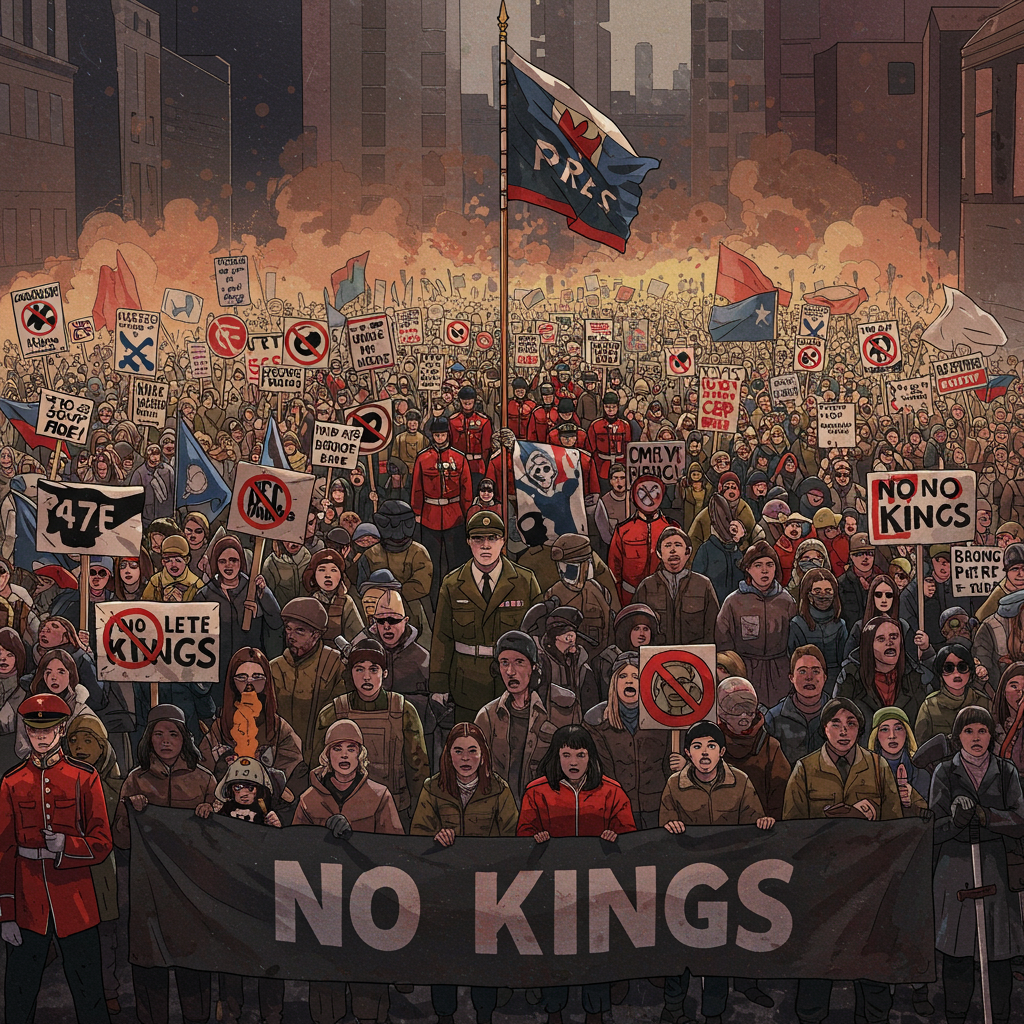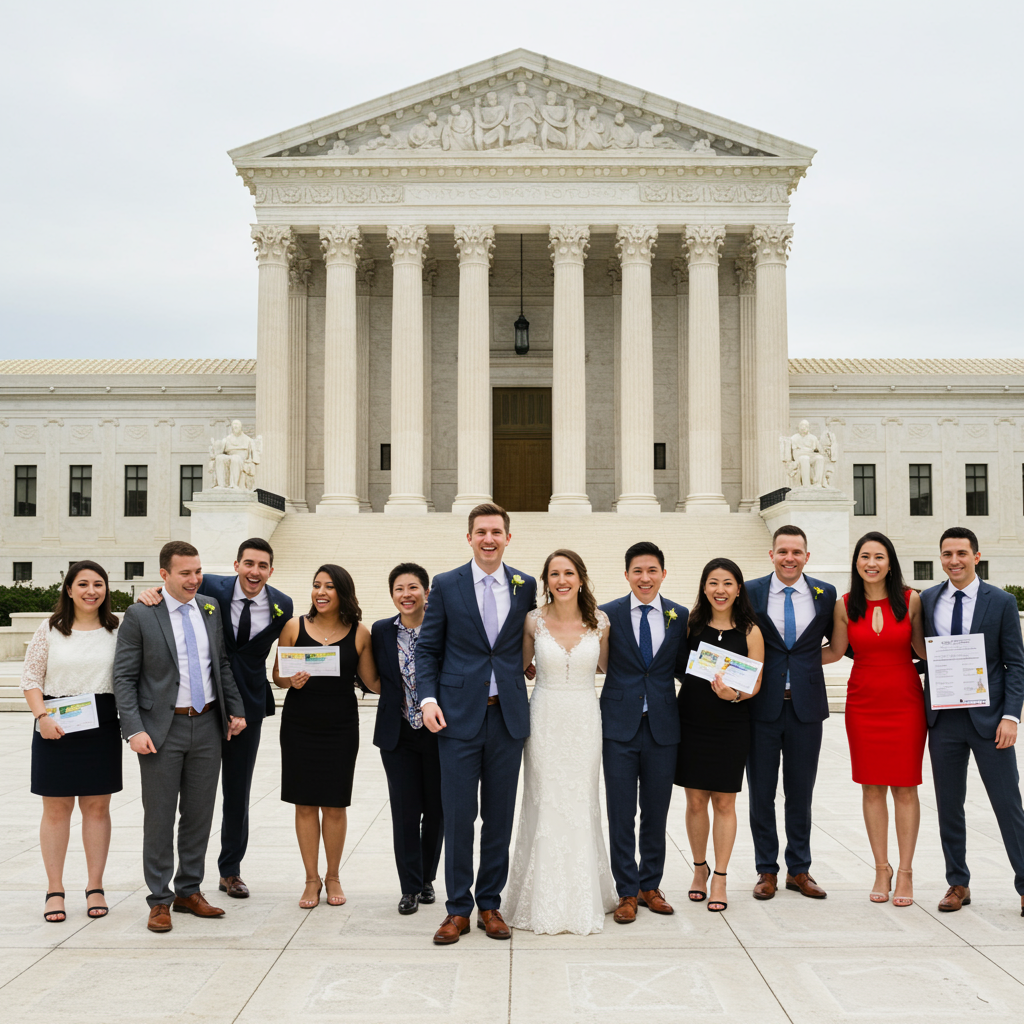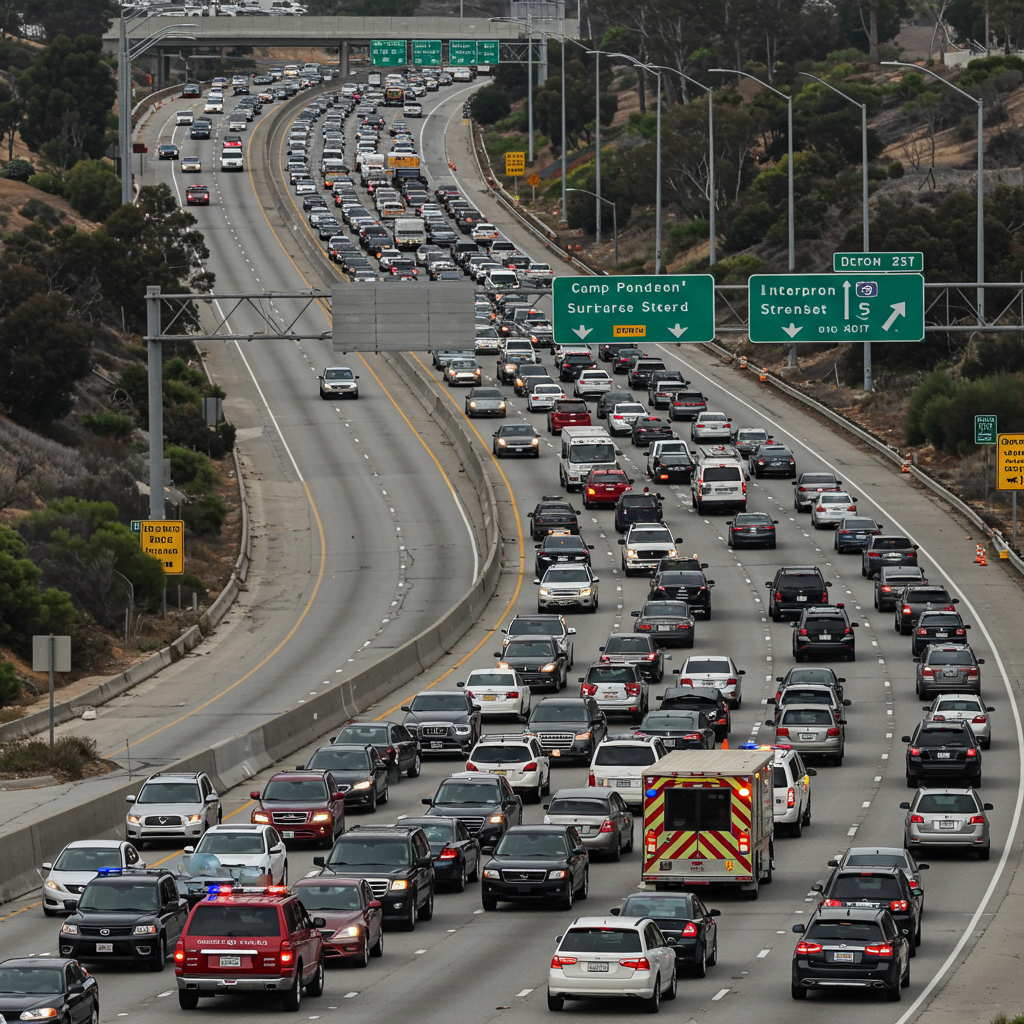Nationwide Defiance: ‘No Kings’ Protests Coincide with Trump’s Military Parade
Thousands of demonstrators gathered in cities across the United States on Saturday, June 14, 2025, participating in widespread “No Kings” protests. These rallies took place just hours before President Donald Trump presided over a large-scale military parade in Washington, D.C., an event scheduled to commemorate the U.S. Army’s 250th anniversary and also coinciding with the President’s 79th birthday.
Organized by a broad coalition of over 200 groups, including prominent names like MoveOn, the American Civil Liberties Union (ACLU), and the American Federation of Teachers, the “No Kings” movement billed the day as a nationwide stand against President Trump’s policies and what they described as perceived authoritarian actions and an erosion of democratic norms.
The Message: Rejecting a “King”
The moniker “No Kings” encapsulates the central criticism of the movement: that President Trump has overstepped the traditional limits of presidential power and acted in ways perceived as monarchical or above the law. Protesters carried signs and chanted slogans like “No kings, no crowns, we will not bow down” and “Whose streets? Our streets!” to symbolize support for democracy and a rejection of what they saw as autocratic tendencies within the administration. Many saw the military parade itself as a costly ($25M-$45M estimate) and potentially politicized display of force, intended more for the President’s personal ambition than a genuine honor to the armed forces.
Organizers deliberately chose not to hold a main protest in Washington, D.C., seeking to create a clear contrast between their “people-powered movement” and the government-sponsored military spectacle.
Why People Took to the Streets
Motivations for joining the “No Kings” protests were diverse but centered on deep concerns about the direction of the country under the Trump administration. Key issues cited by demonstrators included:
Defending Democracy: A core theme was the need to protect democratic institutions and norms against perceived executive overreach and potential shifts towards a “gangster state” or even fascism.
Immigrant Rights: Following recent federal immigration enforcement raids, particularly in places like Los Angeles, many protested in solidarity with immigrant communities. Signs reading “families belong together” highlighted the impact of deportations.
Public Health Concerns: Cuts to critical federal agencies like the Centers for Disease Control (CDC) worried participants concerned about public health and government effectiveness.
Fighting Perceived Oligarchy: Some slogans specifically targeted what protesters viewed as an administration serving the interests of a wealthy few.
In Philadelphia, chosen as a “flagship” protest city partly for its historical significance, thousands gathered in Love Park. Karen Van Trieste, a 61-year-old nurse, told the Associated Press she felt a strong need to “defend our democracy,” citing the CDC staffing cuts as a significant worry.
Scenes from Across the Country
The scope of the “No Kings” demonstrations was vast, with nearly 2,000 events reportedly planned across the US and even overseas. Large gatherings took place in major urban centers:
Philadelphia: Tens of thousands, potentially up to 80,000, created a festive and peaceful atmosphere. Speakers included Democratic U.S. Rep. Jamie Raskin and Martin Luther King III, who emphasized that the country “belongs to the people, not to the monarchs.”
New York City: An estimated 25,000 people marched down Fifth Avenue despite rain, with notable figures like actors Mark Ruffalo and Susan Sarandon joining. Police reported the march was largely peaceful.
Los Angeles: Thousands took to the streets, with estimates exceeding 20,000. The protests here occurred amidst heightened tensions following a week of demonstrations against immigration raids, some of which had turned violent. Rage Against the Machine guitarist Tom Morello addressed the crowd, urging them to make their voices heard.
Other Cities: Significant rallies also occurred in Houston, Denver, Chicago, Atlanta (where a rally quickly reached capacity), San Diego (over 20,000 peaceful protesters), Newark, and many smaller towns.
Demonstrators also utilized creative forms of expression to convey their messages. In Michigan, some participants dressed as characters from The Handmaid’s Tale to highlight concerns about reproductive rights. In Philadelphia, a man dressed as Elvis Presley called the late singer “the only American King,” stating he was there “to downplay any other kings,” reinforcing the movement’s theme.
Context: The Parade and Tensions
The “No Kings” protests unfolded against the backdrop of President Trump’s military parade in Washington, D.C., a rare peacetime display featuring thousands of soldiers, aircraft, and vehicles along the National Mall. The parade faced criticism for its cost, timing, and the perception of it being a political event utilizing military assets.
The nationwide protests also took place amidst a tense national climate. Just days before, President Trump had deployed U.S. Marines and activated the California National Guard in response to protests against immigration raids in Los Angeles, a move that drew criticism from state officials. President Trump had also warned earlier in the week that protesters at the military parade would be “met with very big force,” although a White House spokesperson later clarified support for peaceful demonstrations.
While the vast majority of “No Kings” protests were reported as boisterous but peaceful, some isolated incidents occurred. In Georgia, police used tear gas on a group that attempted to march towards an interstate, resulting in several arrests. In San Francisco, a motorist struck several protesters, an incident investigated as possibly intentional.
Furthermore, planned “No Kings” events in Minnesota were tragically canceled following a shooting that killed two state politicians and the husband of one of them, just hours before the protests were set to begin. Governor Tim Walz recommended avoiding protests due to safety concerns, and organizers complied.
Amidst the potential for confrontation, organizers strongly emphasized nonviolence. Civil rights activist Dolores Huerta urged demonstrators nationwide to remain nonviolent, drawing parallels to the successes of the Civil Rights movement and warning against violence that could be used to justify forceful police response or open the door for provocateurs.
The widespread “No Kings” demonstrations highlighted deep-seated opposition to President Trump and his policies, utilizing the occasion of the military parade to amplify a message centered on defending democracy and rejecting perceived authoritarianism across the United States.



